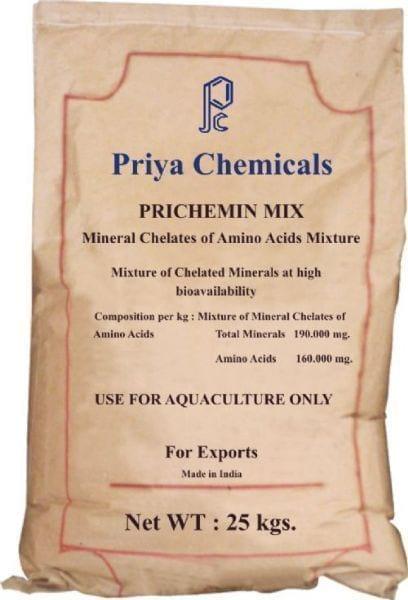Black Soldier Fly Prepupae for Aquaculture Diets
Mass Production of Black Soldier Fly Prepupae for Aquaculture Diets
Published: January 26, 2012
Summary
After decades of work in Tifton, Georgia, University of Georgia researchers think soldier flies will be a viable alternative to fish meal in aquaculture diets. Early work with the black soldier fly ( Hermetia illucens ) used manure as the growth media, but recent efforts show that food byproducts can be a better soldier fly diet. Catfish grow well on soldier flies and other fish, including tilapi...
Related topics:
Mentioned in this news release:

Recommend
Comment
Share
15 de diciembre de 2013
If a fish, such as yellow perch (which require a high protein diet), were to only eat black soldier fly larvae .... what would be the end result?
- longer grow out period?
- increased mortality rate?
- less nutritious fillets?
- all of the above?
thanks
Recommend
Reply

16 de diciembre de 2013
Yellow perch would benefit from a diet with a polyunsaturated fat, omega 3 fatty acid, component. Black soldier fly prepupae have fat, but not much polyunsaturated long chain fatty acids. The protein would be okay. So, growth might be comparable with a 35% protein commercial ration.
It would be hard to say what the meat quality would be, but some added fat in the muscle or viscera is likely.
Recommend
Reply
Seoul National University
19 de diciembre de 2013
I just started this field, but feels very interesting and wish to share some information.
Recommend
Reply

19 de diciembre de 2013
Welcome, Dr. Tae-sung. Your experience with Black Soldier Fly in South Korea would be interesting, especially from the point of system adaptation to your climate.
Recommend
Reply
22 de diciembre de 2013
I am aquaculture students .the cheapest binder is carbohydrate such as flour.
Recommend
Reply
Seoul National University
22 de diciembre de 2013
Dear Dr. Gray
Thank you Dr Gray, I am really wishing to make it up available, it is really desirable to get many information, by the way, would you let me some company which is working at the level of mass production.
Recommend
Reply
22 de diciembre de 2013
What is the current commodity price of USA DDGS?
Will this be significantly impacted if Anhaueser Busch is successful with their pilot biorefinery?
Recommend
Reply
23 de diciembre de 2013
Dear DR. Gary,
Our company is also interestd in this field, and want to make clear how is it produced in commercial scale? What is the normal technology used for that? what is the condition that limits
this production in industrial level?
Would you mind giving me some suggestion or information, I will highly appreciate it!
Recommend
Reply


PRICHEMIN MIX
Priya's PRICHEMIN MIX is a mineral supplement for aquaculture. It consists of a mix of mineral chelats from aminoacids
Suggested link

23 de diciembre de 2013
Substrate selection, based on cost, is important in mass production of black solder fly. When the target dry matter conversion is between 20 and 25%, a very inexpensive substrate is desired. Distillers dried grains is expensive, wet distillers grains or wet brewers grains must be available near to the BSF facility. At one point, when wet brewers grains could be obtained for less than $100 US per ton, it was attractive. These grain byproducts now have export markets in the US and so demand as well as new supply will determine price.
Other byproducts, depending on what is available at a particular location, should be investigated.
One producer, Enviroflight of Yellow Springs, Ohio, USA, uses distillers grains in their efforts to produce black soldier fly and castings for sale. Others around the world have used other substrates.
Depending on design of facilities, labor may be as limiting as substrate cost, especially in batch culture systems.
Drs. Newton and Sheppard proposed and tested mass production and harvesting methods and can be contacted for consulting on those findings.
In my opinion, those who are willing to build new facilities with specific design characteristics favoring BSF will be the most successful. Adapting existing facilities has met with resistance and constraints. An economic analysis of the potential uses of a substrate and the projected cost of BSF production would be necessary.
Recommend
Reply
24 de diciembre de 2013
Does chicken manure make a good substrate?
Has anyone studied the nutrient content of larvae that have used chicken manure as the substrate?
I once worked in a factory egg farm ... ufffff.
Recommend
Reply


PRICHEMIN MIX
Priya's PRICHEMIN MIX is a mineral supplement for aquaculture. It consists of a mix of mineral chelats from aminoacids
Suggested link
25 de diciembre de 2013
Dear Dr. Gary,
We are planning on starting our first pilot on BSF production within the next couple of months and have been looking for Drs. Newton and Sheppard as we have read many of their publications.
Unfortunately we haven't been able to reach them, do you know where/how we may contact them?
Many thanks.
Best regards,
Alejandro
Recommend
Reply
25 de diciembre de 2013
I am confused about something.
I have read that the FCR of BSF larvae is in the neighborhood of 4 to 5.
Is this a FCR for wet larvae or dried larvae?
Since the drying process results is 33% to 40% (1000 grams wet = 333 grams dry), is
the FCR of dried larvae more like 12 to 15?
thanks
Recommend
Reply
25 de diciembre de 2013
Alejandro,
Utilize this link: http://www.organicvaluerecovery.com/contact_us.htm
They are associated with Organic Value Recovery Systems.
Regards,
Recommend
Reply
25 de diciembre de 2013
Thanks Jeff,
I've already tried doing that but I've got an answer saying Dr. Sheppard was no longer working there and was retired.
Regards,
Recommend
Reply
26 de diciembre de 2013
Dear Dr Gary,
Thanks a lot for your reply, which is very useful for us! and I am so sorry for clicking the "bad comment" as the reply icon...
In addition, could you mind telling us how to contact Drs. Newton and Sheppard proposed? my email address: qianer0101@gmail.com.
Thank you very much!
Recommend
Reply

30 de diciembre de 2013
Dr. Sheppard and Dr. Newton can be reached through www.phoenixworm.com.
Both recently retired are working with BSF production as a private corporation.
Recommend
Reply

30 de diciembre de 2013
Please be advised that some UGA activities are on holiday and will resume January 6. I have also learned that Phoenix Worm is also on holiday until January 6.
Recommend
Reply


PRICHEMIN MIX
Priya's PRICHEMIN MIX is a mineral supplement for aquaculture. It consists of a mix of mineral chelats from aminoacids
Suggested link
4 de enero de 2014
EnviroFlight makes a point to state that the substrates that they utilize do not include animal manure. Are there any USDA regulations that restrict animal feed ingredients from including insects/worms that were raised on manure?
The USDA prohibits the importation of insect larvae (dried or wet) that have consumed manure. I believe this is mainly due to the pathogens that may have been in the foreign soil that could be residual in the dried insect.
Recommend
Reply
6 de enero de 2014
Mr. Burtle,
In 2003, you participated in a study with the North Carolina Hog industry
to assess the viability of using black soldier flies in lieu of the traditional
lagoon-and-spray technology ..... what was the end result of this study?
Has the NC hog industry embraced this new technology?
thanks.
Recommend
Reply

6 de enero de 2014
Swine manure in a scraped system is very much suitable for the soldier fly conversion process. However, the great majority of swine operations in NC and elsewhere are liquid flushing systems. Or, scrape followed by liquid flushing into a methane digestion process.
Swine manure remains a very good substrate for BSF production and produces a relatively high quality prepupae compared to other manures.
In the NC study, results provided information for the beginnings of scale-up work, rather than the end. Greenhouses were needed to carry flies into cool weather, large scale egg production technology has since been developed, manure handling and harvest engineering adapted to existing swine operations was never completed.
In the US labeling a new feed ingredient for commercial sale involves USDA processes that require characterization of the product. Perhaps not impossible, but requiring an investment of money for data development.
Outside the US, in some countries, manures are more easily utilized as a substrate for BSF bioconversion and eventual use as animal feed due to regulatory acceptance.
Current US FDA regulations on food safety must be considered when manures are utilized as fertilizers, or substrates, or come in contact with food products without composting times considered in the process.
Recommend
Reply


PRICHEMIN MIX
Priya's PRICHEMIN MIX is a mineral supplement for aquaculture. It consists of a mix of mineral chelats from aminoacids
Suggested link

Would you like to discuss another topic? Create a new post to engage with experts in the community.




